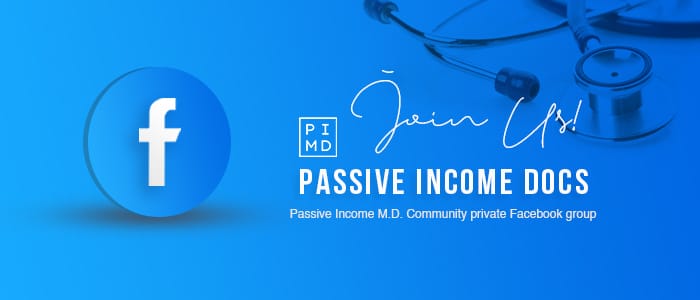
Can I Trust PSLF? Creating a PSLF Side Fund
This post may contain links from our sponsors. We provide you with accurate, reliable information. Learn more about how we make money and select our advertising partners.
“There’s no way you are old enough to be my doctor. Are you still in training? Does your momma know you’re here?” I’d be lying if I told you that I didn’t get these questions most days at work. Seriously, even the last question.
I have the unfortunate disposition of looking like a 14-year-old to most of my patients who are still old enough to remember Doogie Howser, MD. I don’t blame my patients, though. They just want to make sure I have the credentials to take care of them, and the entire specialty of anesthesia is built on the mantra of “Trust, but verify.”
A recent area in physician personal finance that requires the Trust, But Verify method is PSLF (Public Service Loan Forgiveness). People often ask, “Can I trust PSLF?”
My answer? Trust, but verify.
Today’s Classic is republished from The Physician Philosopher. You can see the original here. Enjoy!
Public Service Loan Forgiveness (PSLF)

If you are reading this, you are likely aware of the Public Service Loan Forgiveness program, which promises to forgive all of your remaining medical school debt after 10 years of monthly payments while you work for a 501(c)3 (non-profit) or governmental organization.
Whatever balance remains after that is forgiven, and it is tax-free, unlike other forgiveness programs.
If you are smart enough to do this in residency, those years count, too!
Sweet deal, huh? Well, it is unless you don’t believe that the government is going to own up to its promise. The fact is that the forgiveness for PSLF became available for the first customers in October 2017.
And when that happened, there were a lot of headlines discussing how 99% of people didn’t get forgiveness when they applied.
Has anyone actually had debt forgiven? The answer is yes. (There are some examples like this one from Big Law Investor).
Unfortunately, there are specific qualifications to take part in the program. You must also certify each year to continue in the program.
But, what if, you have qualified and certified each year? Can you trust that five or six years from now the government will own up to forgiving all of this money for all of these graduates who make lots of money being doctors? What can you do if you don’t trust that it’ll exist? Should you just give up and refinance your student loans?
A little trust is probably deserved
Those currently enrolled in the PSLF program, they will likely be grandfathered into any changes that might happen. And, remember, there is good reason to believe that PSLF will work out.
For those currently in medical school counting on this program in the future, I am not sure if it’ll exist or not when your time comes. Why not? Well, there have been signs that things may change.
The PSLF page on the governmental student aid website currently (as of 4/7/18) has an Alert that reads:
Alert! The Consolidated Appropriations Act, 2018 provided limited, additional conditions under which a borrower may become eligible for loan forgiveness if some or all of the payments made by the borrower do not qualify under current requirements for Public Service Loan Forgiveness (PSLF). The U.S. Department of Education is assessing the newly enacted law and will explain the new forgiveness conditions to customers on this page as soon as more details are available. We encourage you to check back periodically.
There are also examples currently in Congress, such as the PROSPER Act that potentially propose getting rid of PSLF for new borrowers going forward. (It says nothing about abandoning this for people who are currently in the PSLF process.)
That said, everything that I have seen has pointed to people who are currently in the program being able to continue in the program.
So, my first word is “Have a little trust.”
This is probably easier to swallow if you are 1 year out from forgiveness, but what if you are 5 years out? What are your options?
Trust, But Verify: A PSLF Side Fund
If you are of the belief that PSLF will be going away and that you are going to get screwed, then you probably need to have a backup plan. The best plan is to live like Dr. Early Financial Independence who lived like a resident and save up money in case it doesn’t work out.
But you didn’t come here for vague advice. So, here is the 3 step process for dealing with the PSLF problem by creating a PSLF Side Fund.
Regardless of what the government does, you’ll benefit from these steps.
Step 1. Determine what your payment would be without PSLF
Most people advocate for paying off your debt in three to five years. If you are partaking in PSLF, it’s likely because you have a high debt burden. So, the first step is to pretend that you are planning to pay off that debt in five years (12 payments per year = 60 payments).
Take your debt and divide it by 60 (this is roughly how much a monthly payment would be if you had to pay it off yourself over 5 years). For example, say you have $500,000 in debt. $400,000 / 60 = $6,667
This is approximately (without interest) what your monthly payment would be to pay off that debt in five years yourself.
Step 2. Subtract out your actual monthly payment in PSLF
The number above probably looks rather large to you. However, don’t forget that you are also making a PSLF payment. If PSLF didn’t exist, that number in Step 1 would be potentially what you would be paying on your loans. For some who don’t learn to be content with what they have, they will never be able to pay off a number like that.
So, the next step is to take the number in step 1 above and subtract out your monthly PSLF payment.
Monthly Payment (from Step 1) – PSLF Payment
For example, let’s say your monthly PSLF payment is $1,500. You would take the number from step 1 ($6,667) and subtract your $1,500 payment from that. This would give you a grand total of $5,167 remaining.
Step 3. Invest the money in a PSLF Side Fund
The number you came away with within step 2 is the potential difference between your PSLF payment and what you’d need to be paying if PSLF didn’t exist. Therefore, if the whole system fell through or the government reneged on the promise they made to you… this is the number you should have been saving to pay off the debt.
Therefore, the best way to deal with being concerned about PSLF is to verify it will work out in your favor regardless. Take the money and invest it in a taxable account at a big mutual fund company (Vanguard, Schwab, Fidelity, etc).
This serves two purposes.
One, you can pay off the debt if the government defaults on its promise. Two, if the government owns up (like I think they will if you are already in this program), then you have a sizeable taxable account which puts you that much closer to your 10 milestones of financial independence.
A taxable account is also a great way to bridge an early retirement.
Either way, you make out ahead of where you’d be if you just spent the money depending on the government to forgive all of your debt.
Investment options
Remember, you don’t want to be crazy aggressive with your money here. Don’t go buy bitcoin, Google, or Apple stock. You want this money to hopefully mirror the stock market and, at least, account for inflation.
Unfortunately, bonds in taxable accounts can be very tax inefficient. On the other side, investing in pure stocks for something that you may need in five to seven years is not a great idea, either. That may be too much volatility for a short time frame.
Therefore, I recommend that you play it smart. The bonds you want in a taxable account (a post unto itself) are municipal bonds, because they are not taxed at the federal level.
So, some options that contain good stock-to-bond mixtures where the bonds are only municipal bonds include something like the Vanguard Tax-Managed Balanced Fund or the Vanguard Intermediate-Term Tax-Exempt Fund. Both of these contain solid stocks and the only bonds they contain are municipal bonds.
Hold it for at least a year so that you pay long-term capital gains taxes. Then, if the government fails to deliver on its PSLF promise, you can pay off the debt yourself. If not (which is more likely in my opinion), you still have a tax-efficient investment in your taxable account that puts you closer to your financial independence number.
I’d love to hear other people’s thoughts on this topic. Are you taking part in PSLF? Are you putting money into a taxable account as a backup plan? Or are you trusting with blind faith that the government will follow through?
Find the original post here or hop on over to Passive Income Docs on Facebook to share your thoughts!

Disclaimer: The topic presented in this article is provided as general information and for educational purposes. It is not a substitute for professional advice. Accordingly, before taking action, consult with your team of professionals.

